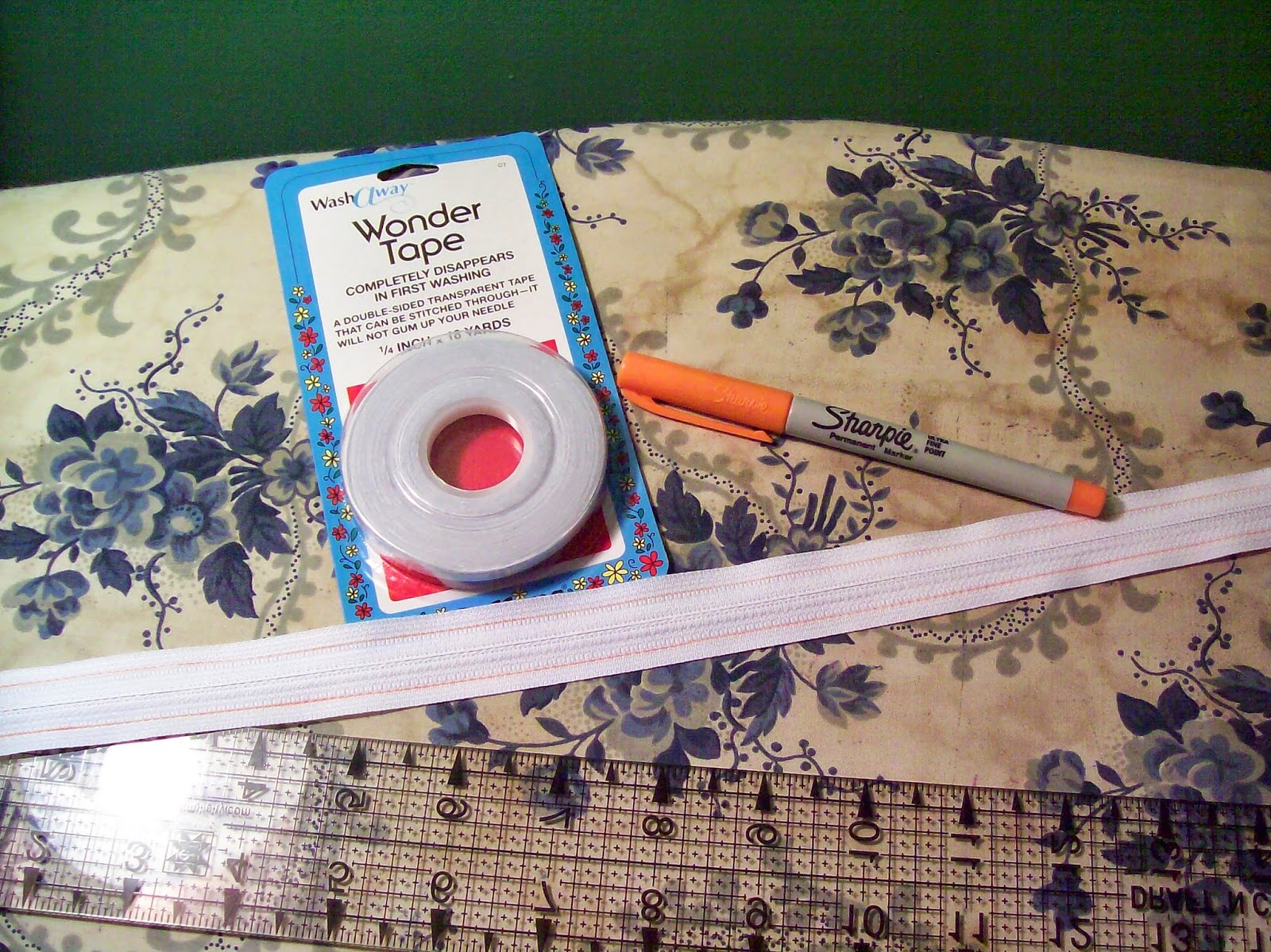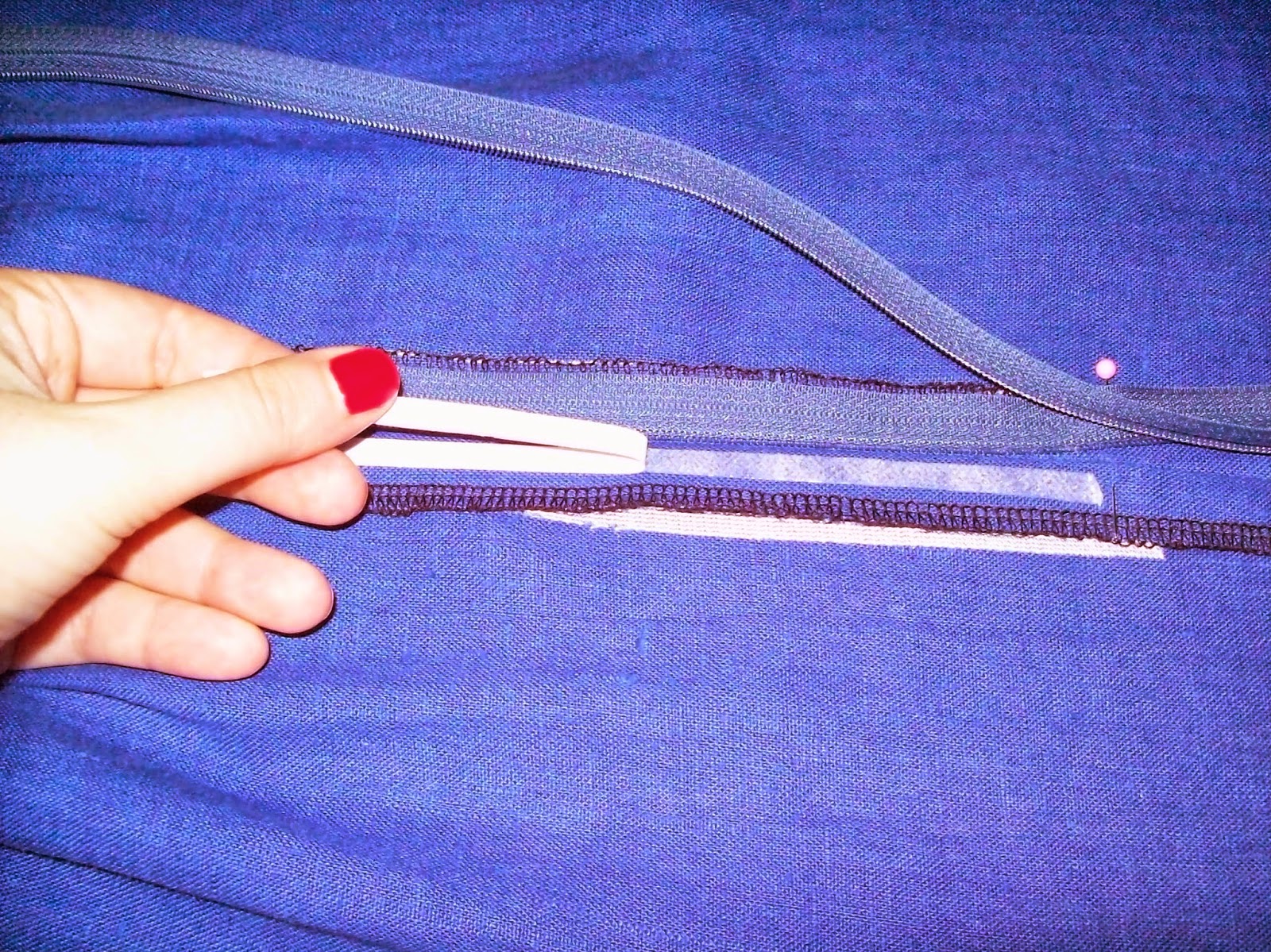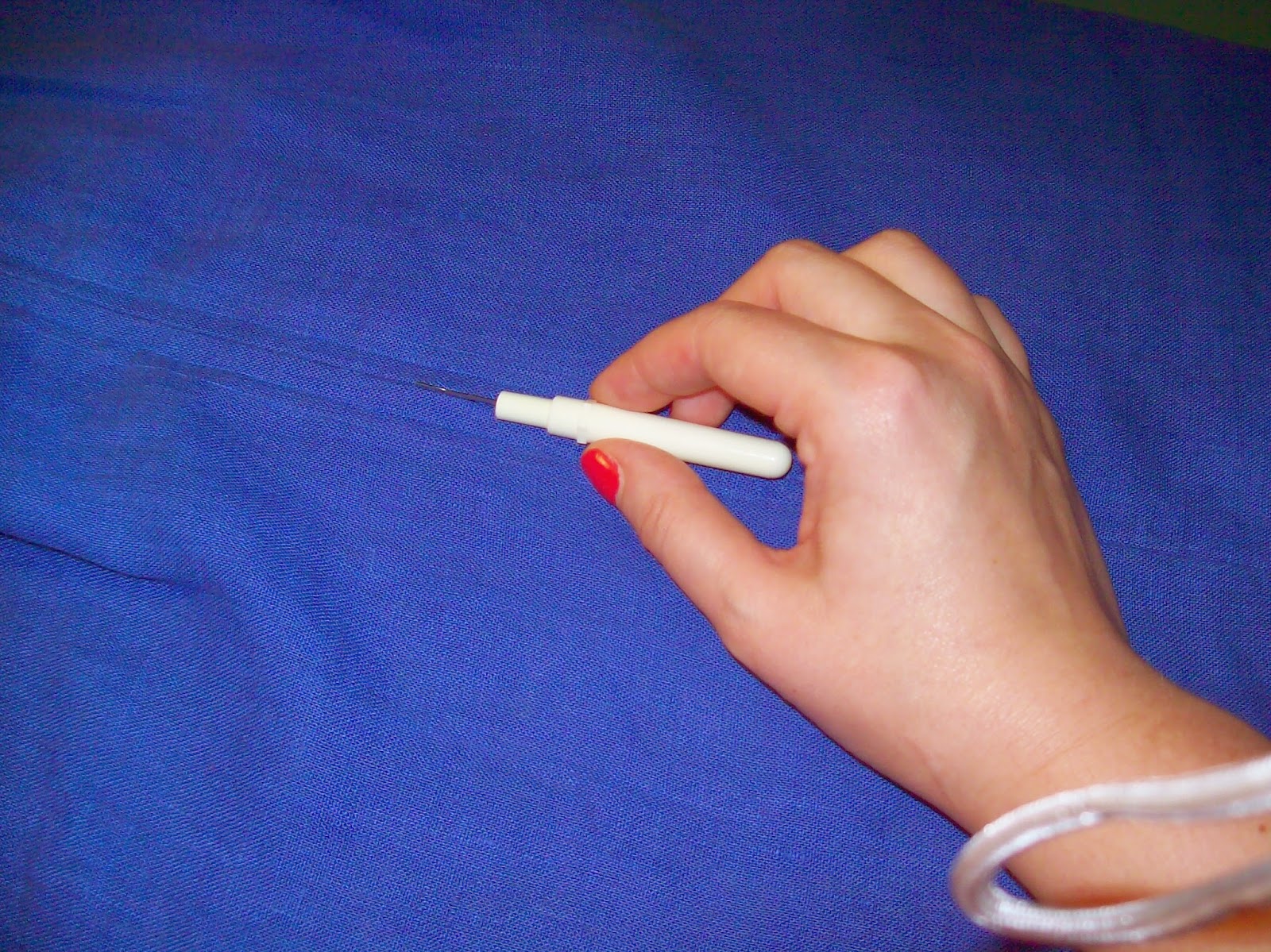I love the names given to colors, and this linen is no exception: Hollyhock. I bought this from Fabrics-Store.com and have been a fan of their linens for some time. This was my first time trying the lightweight linen and I think it works beautifully for a skirt like the Zinnia from Colette Patterns.
This color is Hollyhock, sadly no longer available. I knew that the fabric was too lightweight and semi-sheer to stand alone without a lining (say, as a dress), and the pleated version of Zinnia might sag with the weight of the pleats, so I went with version 1. Version 1 has a button placket unlike any I've seen. The fabric folds in on itself and is then top-stitched rather than attaching a facing that then folds. This placket is not interfaced and lacks the structure of a placket you'd see in a collared shirt. I'm not sure I'm 100% happy with the weight of it, and am considering ways to beef it up for future versions.
I do love the flare of the skirt and for that reason I've made several of these cut on the fold without the placket - you still get the pouf at the waist and flare at the hem without the placket down the front.
This version came together quickly and used 2 yards of linen. I had some heavy duty buttons in grey that worked well.
Linen wrinkles. It's just a fact of life that you have to accept it if you choose to work with the fabric. I love the way the fabric breaths in hot weather, how it floats in the wind, and that I can toss all of my linen makes into the washer without fear.
I did notice that the waistband on this version, which is the same size as my pleated Zinnias, feels more snug. I'm not sure if I made an error with the placket and buttons or what, but there's definitely less ease in this waistband compared to my others. I find I need 1/2" of ease at the waist and more if I'll be singing that day.
I did make one giant oops on this garment, which you can't see in the photo of me wearing it:
This just goes to show you that it doesn't matter how long you've been doing anything, mistakes are inevitable. I measured all around this to cut off the bias stretch and then found this. I liken this to completing a dress and zipping it up only the find the zipper doesn't match at the top (which I still do from time to time.)
Are these the kinds of things that give our handmade garments character? Do they say, "This garment was made with love!"? This reminds me that no matter how often I sew (which is everyday) or how long I've been sewing (three years), I will make mistakes. The perfectionist in me hates this, but she's learning to let it go.
Pattern: Colette Zinnia
Size: 14 w/ length removed
Fabric: Hollyhock lightweight linen from fabrics-store.com
Needle: Schmetz 70/10 Micro
Thread: Gutermann Mara 100
Changes: Removed 4" length to 22" from waist

















































